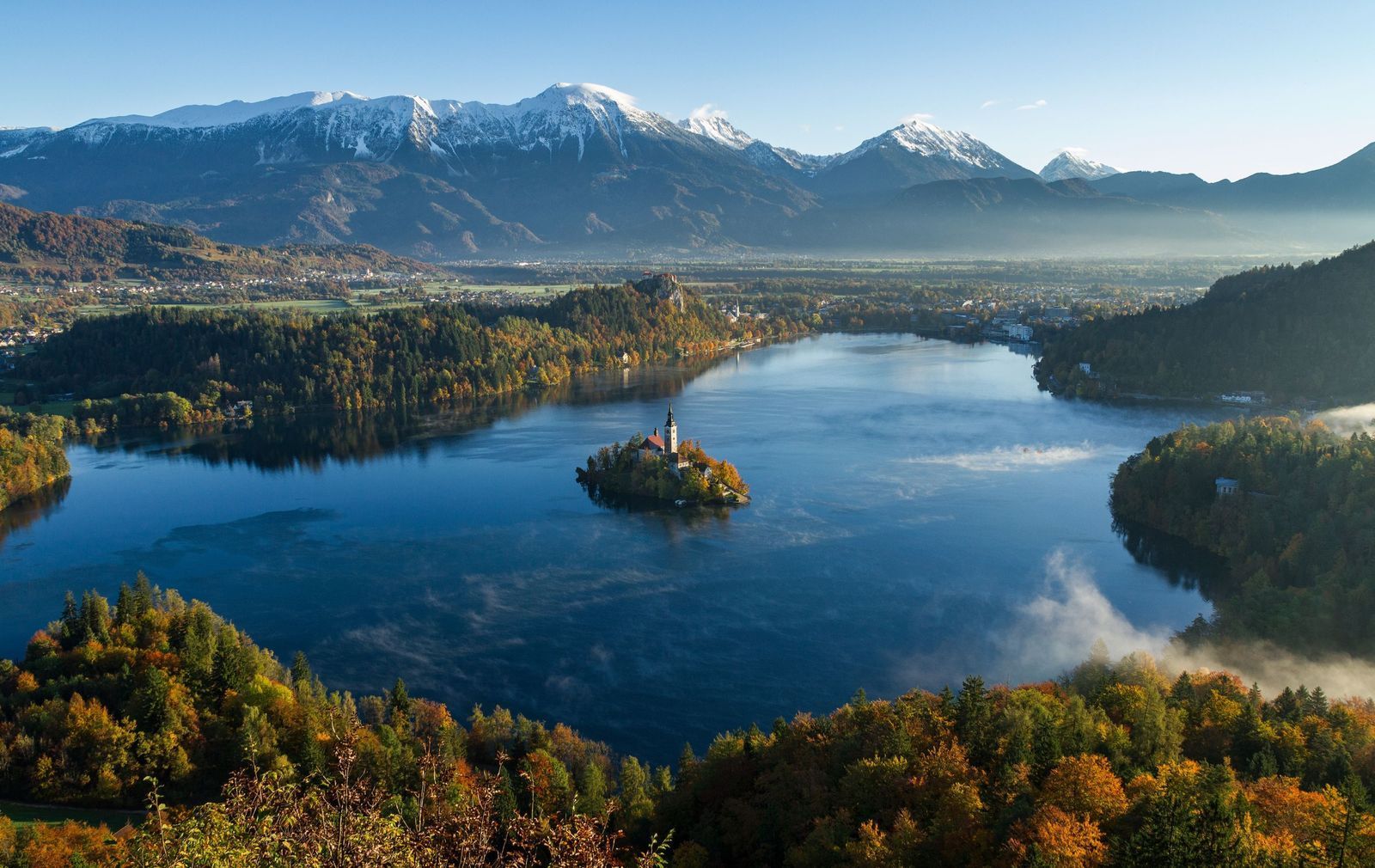Hiking trails in Slovenia are plentiful. After all, 60% of the 20,273km² country is forest. That’s quite a decisive majority and one that lends itself very well to outdoor pursuits. There are plenty of adventures to be had in Slovenia, from canyoning to rafting and paragliding, and of course hiking.
Nestled inside the borders of Italy, Austria, Croatia and Hungary, the country of Slovenia itself may not be huge, but the diversity of landscape on offer certainly is. There are plenty of amazing hiking regions in Slovenia, including the mountainous Julian Alps, the Kamnik and Savinja Alps and the Karavanke Alps. From the beauty of Lake Bled and Triglav National Park to the lesser known rivers of the Soča Valley and landscapes of Koroška, Zasavje and Logar, the variety of Slovenia really is hard to match.
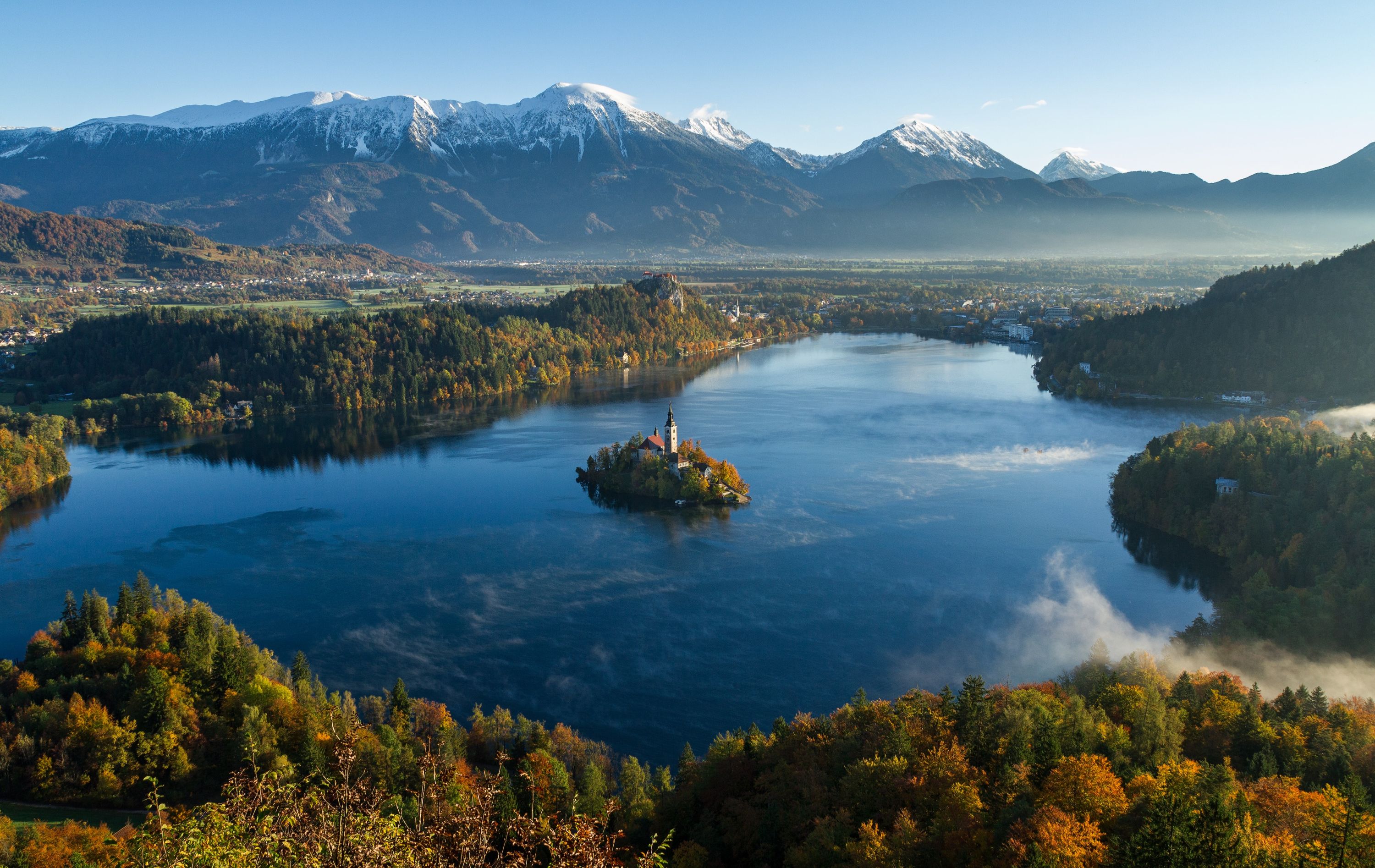
So where do you start? Looking at some of the best hiking trails in Slovenia isn’t a bad place, that’s for sure. Here are some awesome hiking trails in Slovenia which should give you an idea of what you’re in for. They vary in length, time required and difficulty.
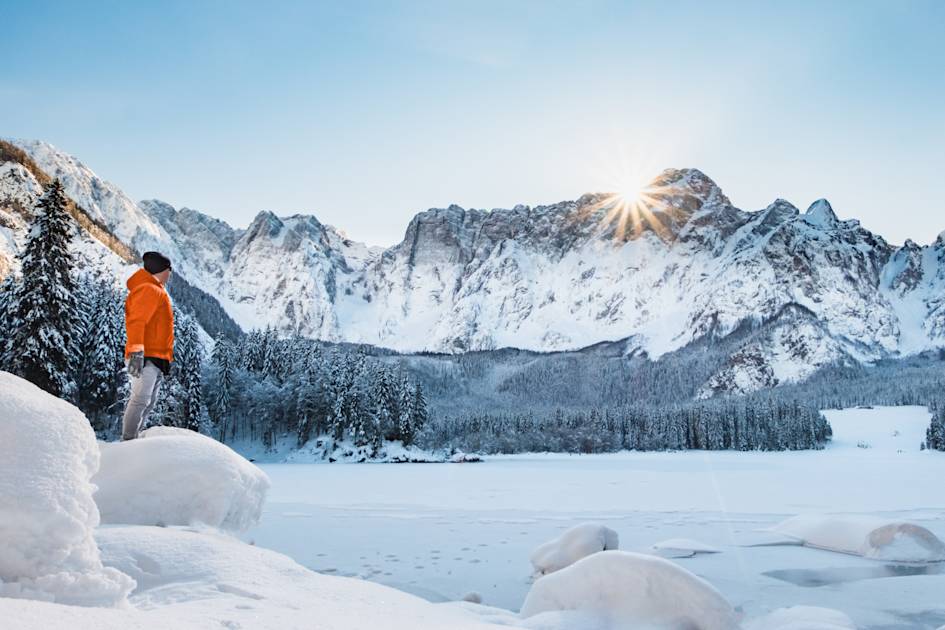
Just remember, you may encounter via ferratas along the way on high alpine routes, so you should either be experienced, trained and know what you’re doing up there, or be trekking with a guide who can keep you right.
When to Go Hiking in Slovenia?
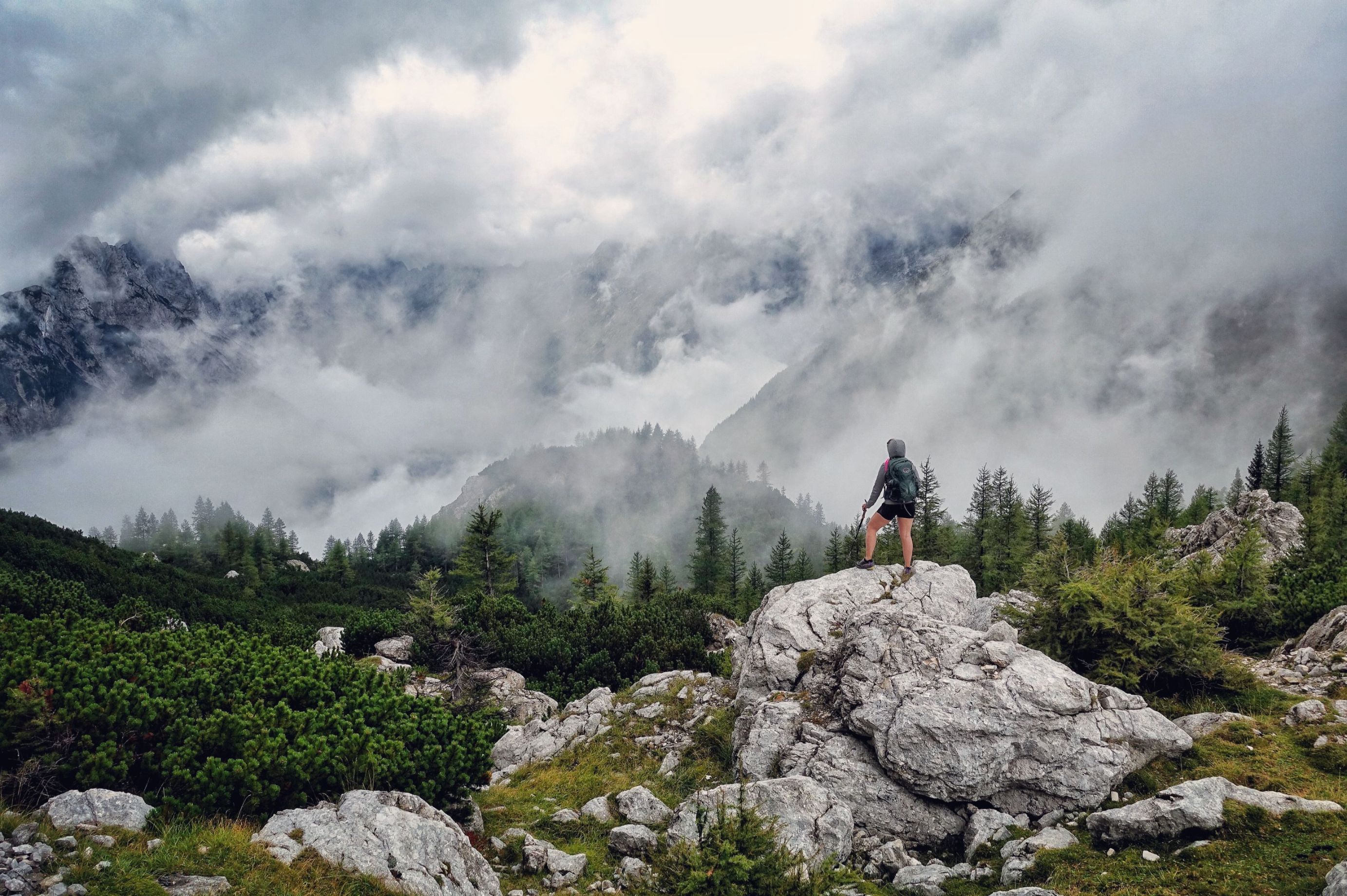
Before we get into the best hiking trails in Slovenia, it’s worth touching on when is the best time to go hiking in Slovenia. Typically the trail weather is at its best between June and September. The high routes are prone to snow, being over 2000m and all, and even in June you can come across snow on the trails. Outside of those months, there’ll be even more of the white stuff, of course. If you come in winter, it may be best to come on skis!
1. Climbing Mount Triglav (2,864m)

Distance: 6-10km
Days required: 2 days
In the centre of Triglav National Park, the only national park in Slovenia, you’ll find the eponymous Mount Triglav. It’s not particularly hard to spot, being the highest mountain in the country. At 2,864m tall, it was previously the highest mountain in all of Yugoslavia, too. It’s often said that climbing Mount Triglav is a right of passage for Slovenians and for any mountaineers travelling to the country.
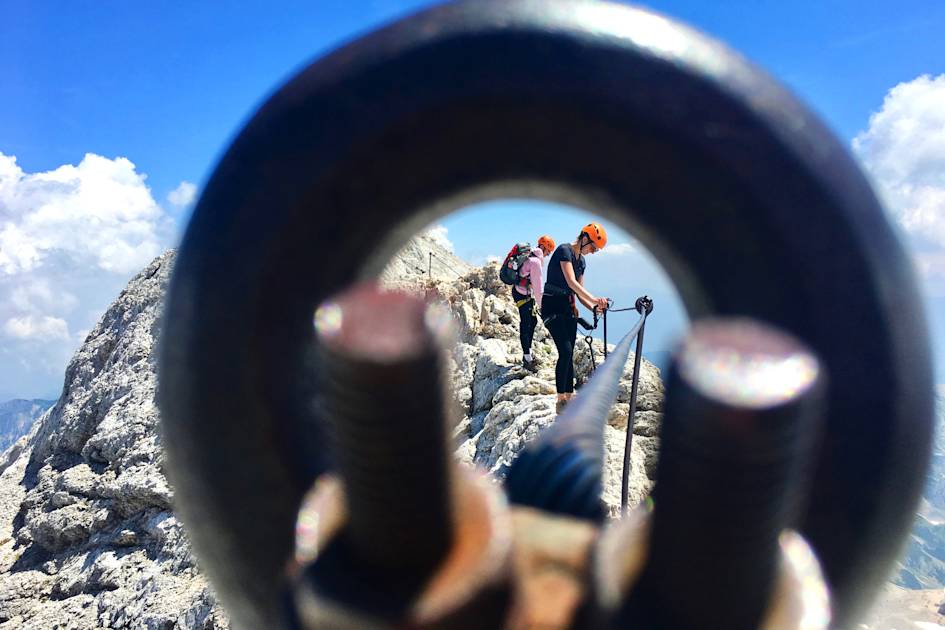
Specifically, Slovenia’s first President, Milan Kučan, once said that it was an obligation of all Slovenians to climb Triglav some time in their life. While that seems like somewhat of a rash (arguably quite exclusionary) statement, it does point out just how important the mountain is to the country.
Triglav even makes an appearance on the Slovenian flag and coat of arms. And during WW2 the stylised depiction of Triglav which appears on the Slovenian coat of arms became a symbol of liberation and resistance. It’s on the 50 cent coin in the country now, too.
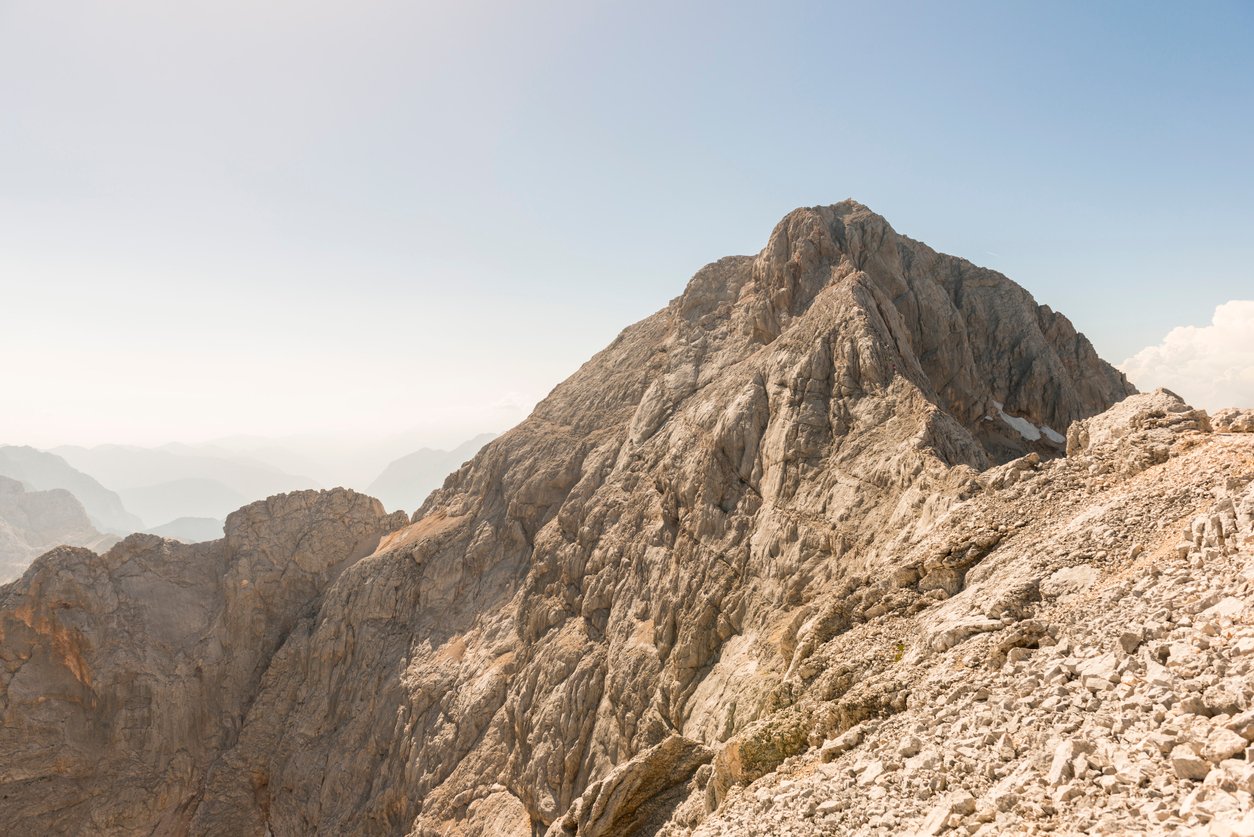
There are numerous routes to the summit of Mount Triglav. All of these culminate with the famous hour-and-a-half via ferrata, which requires a bit of a head for heights. When you’ve reached the top, you’ll have earned it. It’s usually a two day venture, climbing six to eight hours to a mountain hut, then rising early to summit the mountain and descend the morning after. This is best done from July to October.

We’re going to focus on the route from Krma Valley to the summit of Mount Triglav. This is actually one of the longest routes to the Krederic Hut, where you stay the night before summiting. But it’s incredibly scenic. It’s also a lot more accessible than other routes, so it’s a popular route to summit of Triglav even in winter.
The starting point for this route is near Kovinarska Koča Hut in the Krma Valley. You stroll through a Slovenian forest, before ascending to beautiful views of the remarkable Draški Vrh rock faces. You’ll climb quickly and reach a shepherd’s hut at 1580m then get to the foot of Rž, a (difficult to pronounce) mountain itself which reaches up 2,538m into the clouds of the Julian Alps.

A hike through the valley lined by mountains and you’ll turn right onto a rounded ridge which brings you to the Krederica Hut. Spend the night watching the sunset from the mountain hut. From there, you’ll take the famous, technical and exposed (but well-secured!) via ferrata trip to the summit of Triglav. Remember to screw on your head for heights on that final day!
2. The Slovenian Mountain Trail
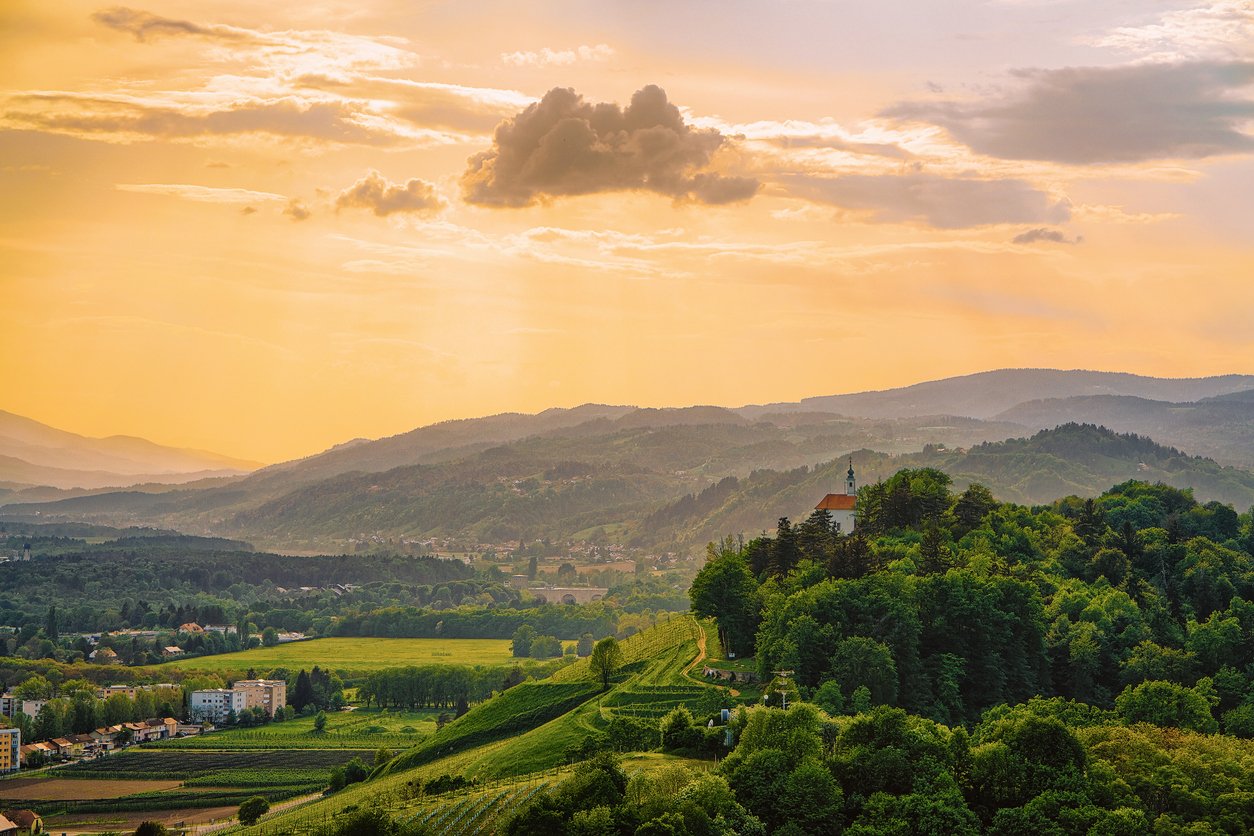
Distance: 599km
Days required: 28 days
The Slovenian Mountain Trail is the longest, but also the most popular, long-distance trekking route in Slovenia. It comes in at 599km, which if we’re being honest, feels slightly like whoever designed the trail was just trolling people who like round numbers.
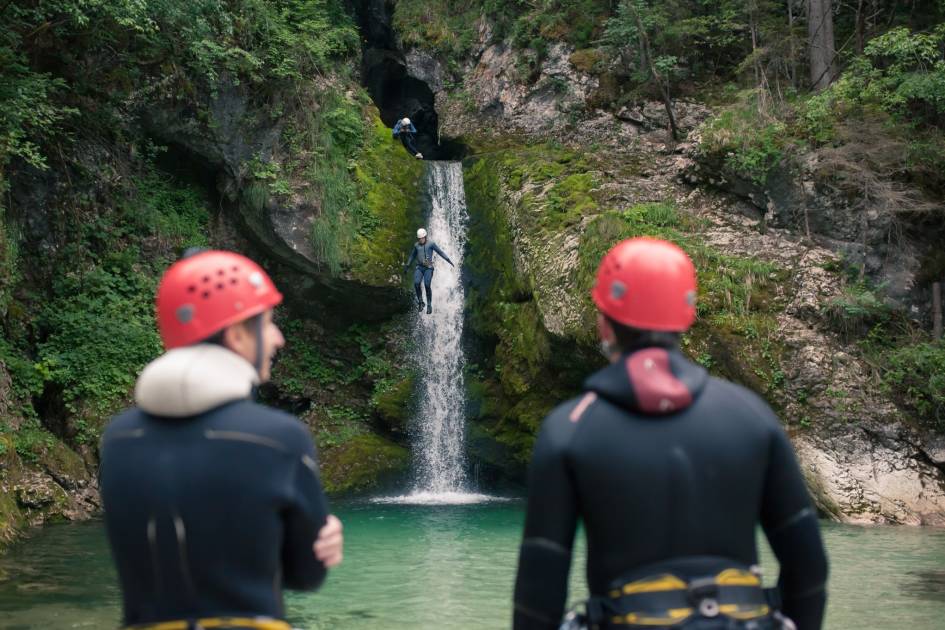
As you’d imagine from that length, the Slovenian Mountain Trail requires a fair bit of time to complete. It’s normally walked over 28 days (though the trail running record is just over a week). The route takes you from Maribor in northeastern Slovenia to Ankaran in southwestern Slovenia, on the coast of the Adriatic Sea.
Let’s delve a little further into that route. The Slovenian Mountain Trail covers almost the entire north and west borders of Slovenia, meaning you’ll see a whole lot of the country (and a little of Austria and Italy) en route.
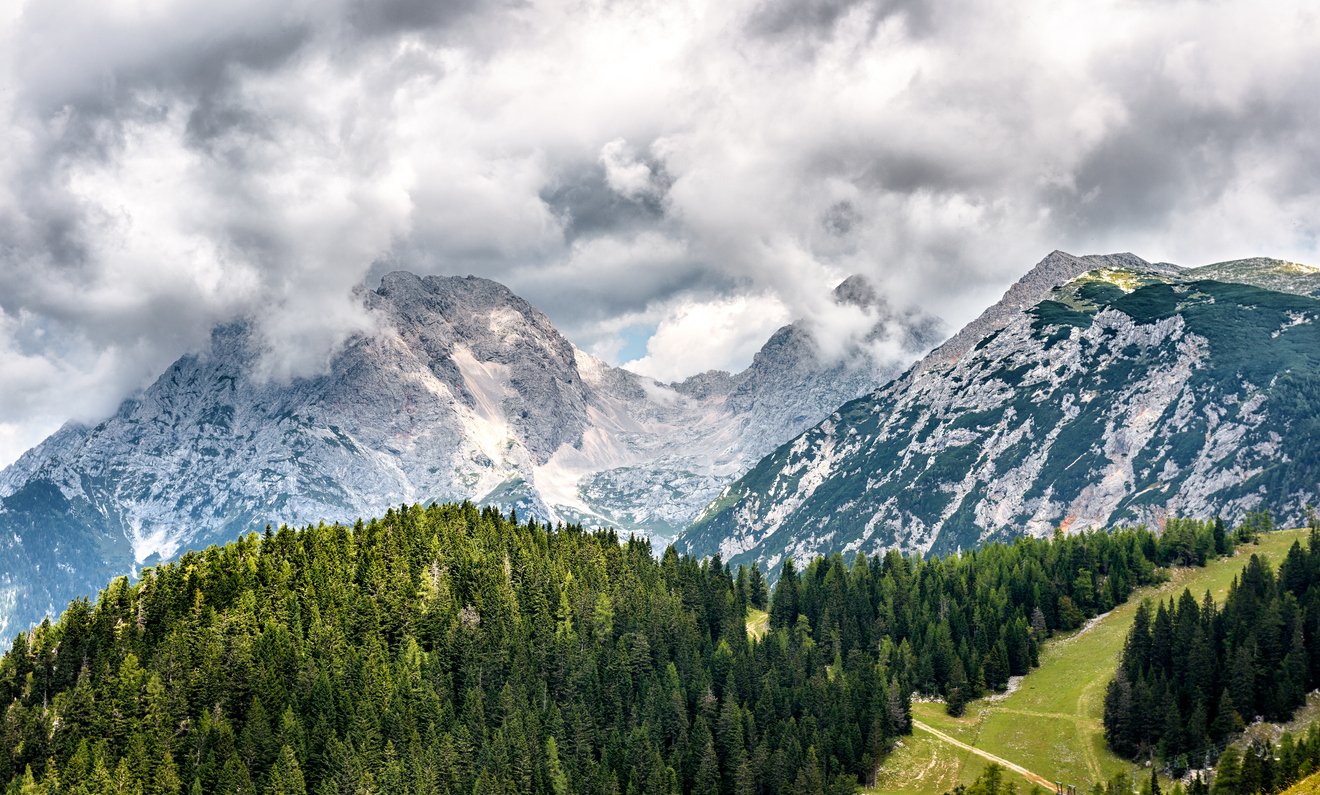
From Maribor you first cross the Pohorje Hills, a mostly wooded mountain range with views of the big alpine summits in the country off in the skyline. The route enters the Alps via the Kamnik and Savinja Alpine range, crossing their highest peaks, and then goes on to the long Karavanke range which borders Austria. You’ll descend, following the trail leading into the Julian Alps, before climbing to Mount Triglav and seeing the steepest peaks of Slovenia.
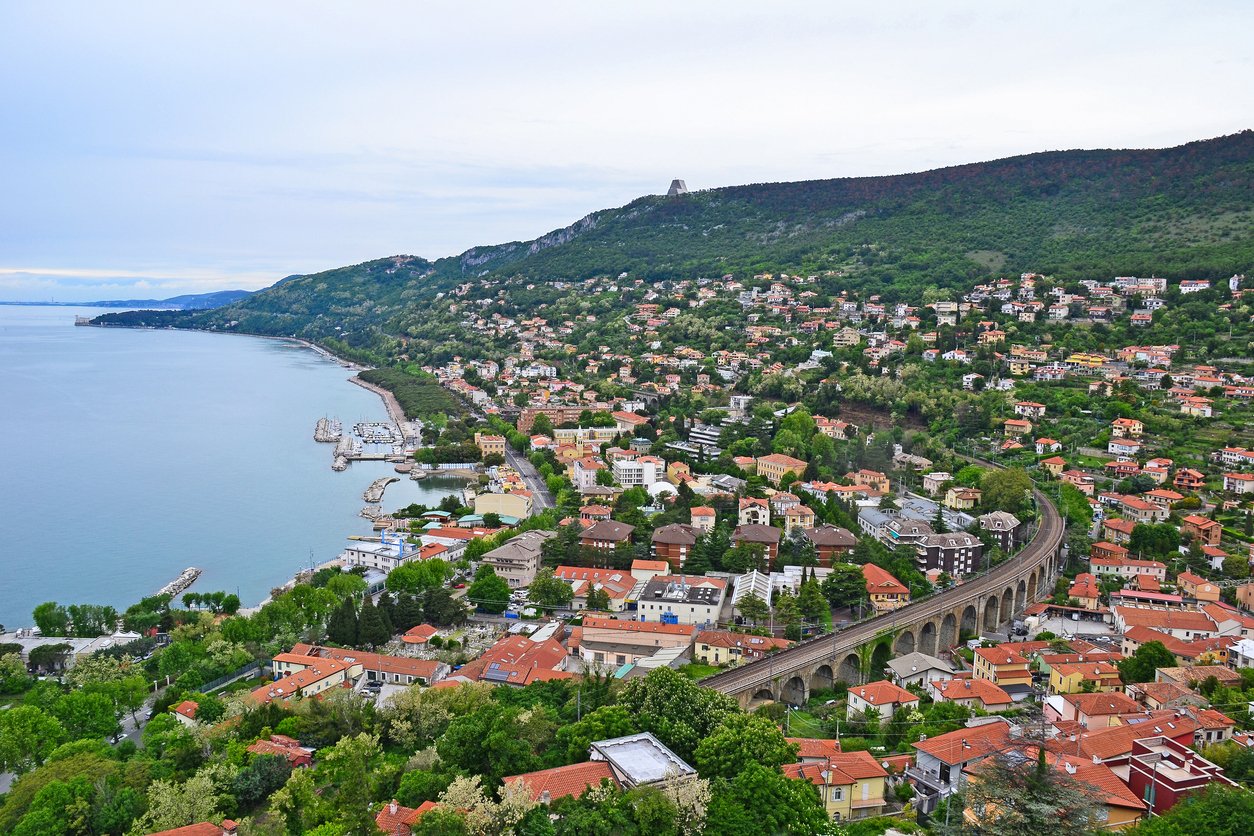
After that it’s on to the coast through the Karst Region, with beautiful views of the Adriatic Sea. Along the way you’ll pass 49 mountain huts, 23 peaks and five separate towns. And when you’ve finished, you can actually say that you’ve just completed the oldest “connecting trail” in the world!
3. The Zasavje Long-Distance Trail
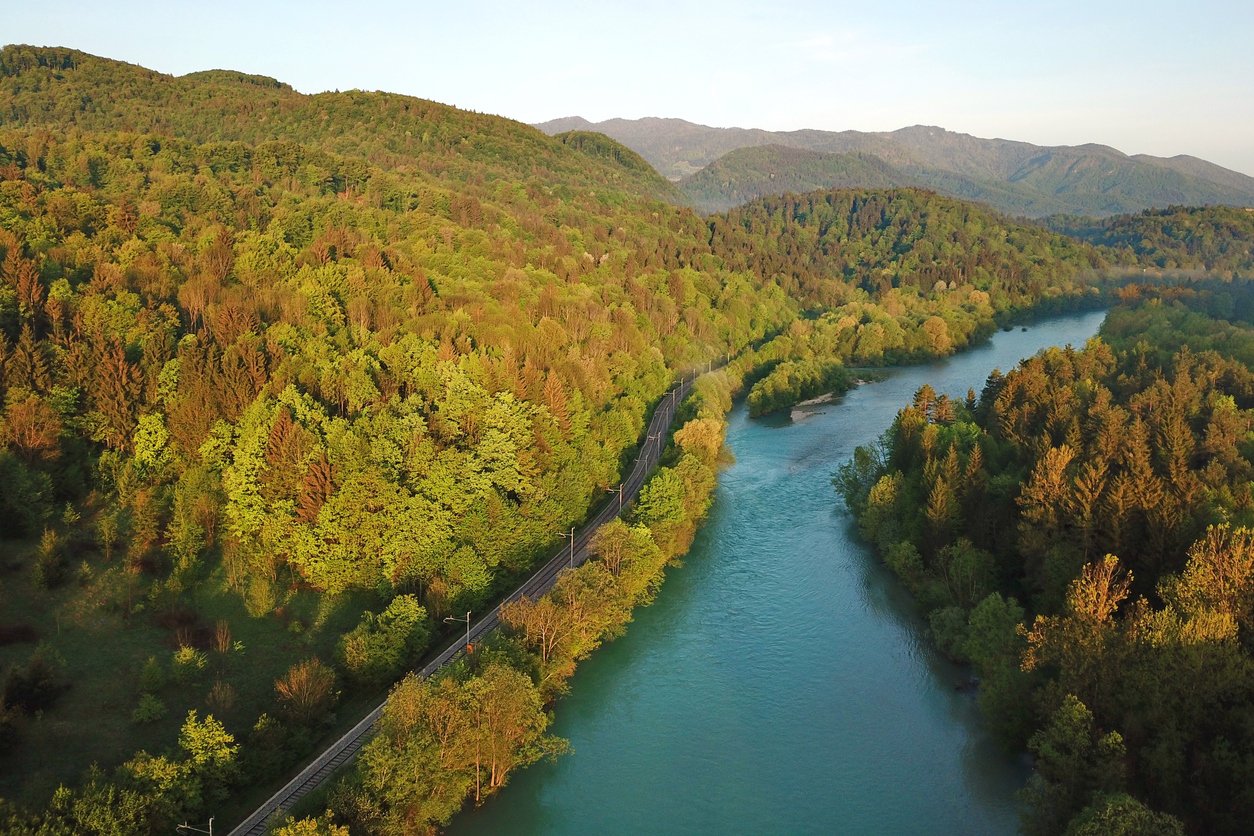
Distance: 200km
Days required: 12 days
The Zasavje long-distance trail is a 200km hike through one of the many wine regions of Slovenia. You might not get the same big mountain views you would get in the Julian Alps, but there’s plenty to see along the way – and some of the best culinary delights in the country. The early landmarks of the route include Podsreda Castle, a fine example of Roman-style architecture built in the first half of the 12th century, and the beautiful Tonček Mountain Hut on Mount Lisca.
The trail then guides hikers northwest through the rolling hills of the Posavje Region, also known as the Lower Sava Valley. This will eventually lead you into the eponymous Zasavje Region, or the Central Sava Valley.
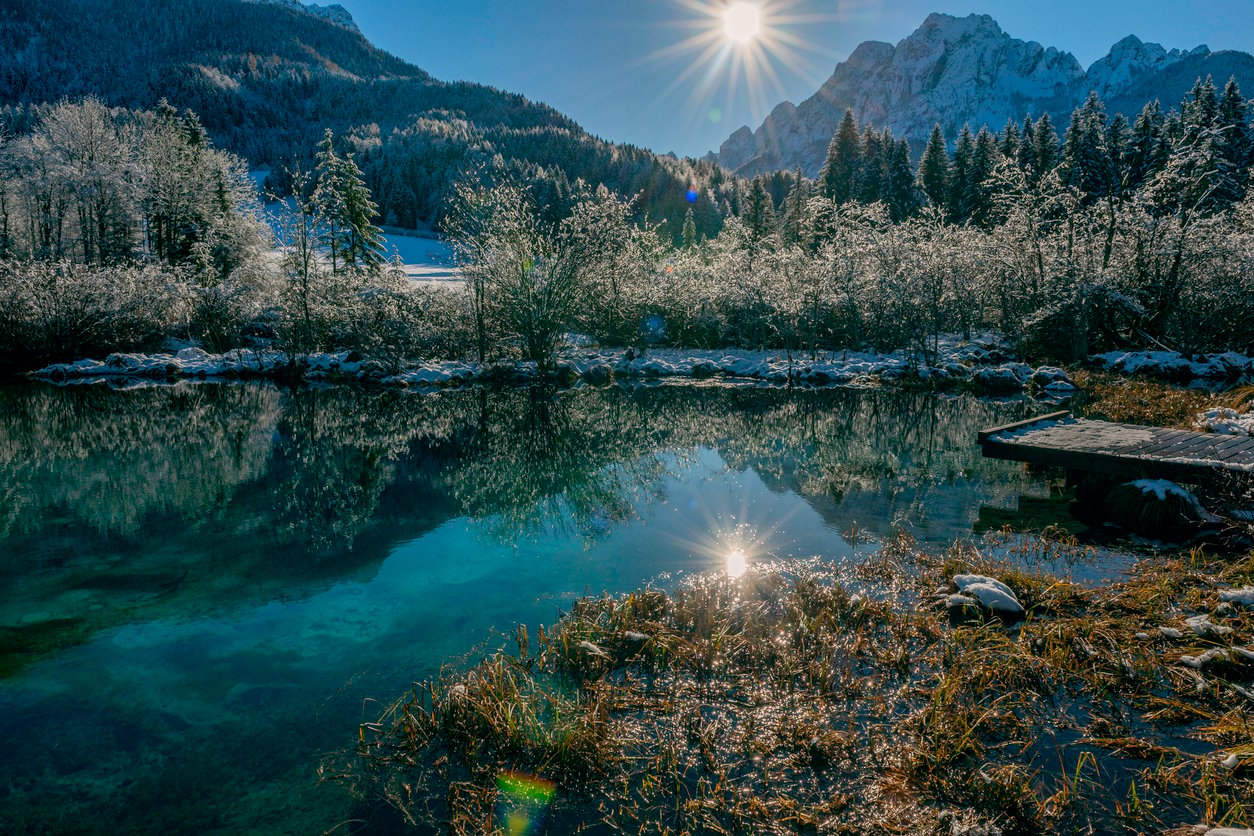
Along the way you’ll be tackling plenty of mountains, of course. Mount Kopitnik, the Gore Plateau, Mount Šmohor, Mount Kal, Mount Mrzlica, Mount Sveta Planina and Mount Čemšeniška Planina are just a handful of the sights. Each have views as beautiful as the names are difficult to say out loud. After that, the trail then follows the River Sava itself and the elevated landscape alongside the river. This involves walking through the renowned Zasavska Sveta Gora pilgrimage site, at the top of an 852m mountain. It’s also home to a beautiful mountain lodge where you can watch the sun set and spend the night.

You’ll soon pass through the geometrical centre of Slovenia, near Vače, climb the nearby Slivna Hill, pass through Janče to Ostrež Hill and finally walk up Mount Kum, the highest mountain in the Posavje Hills at 1,220m.
4. The Soča Trail
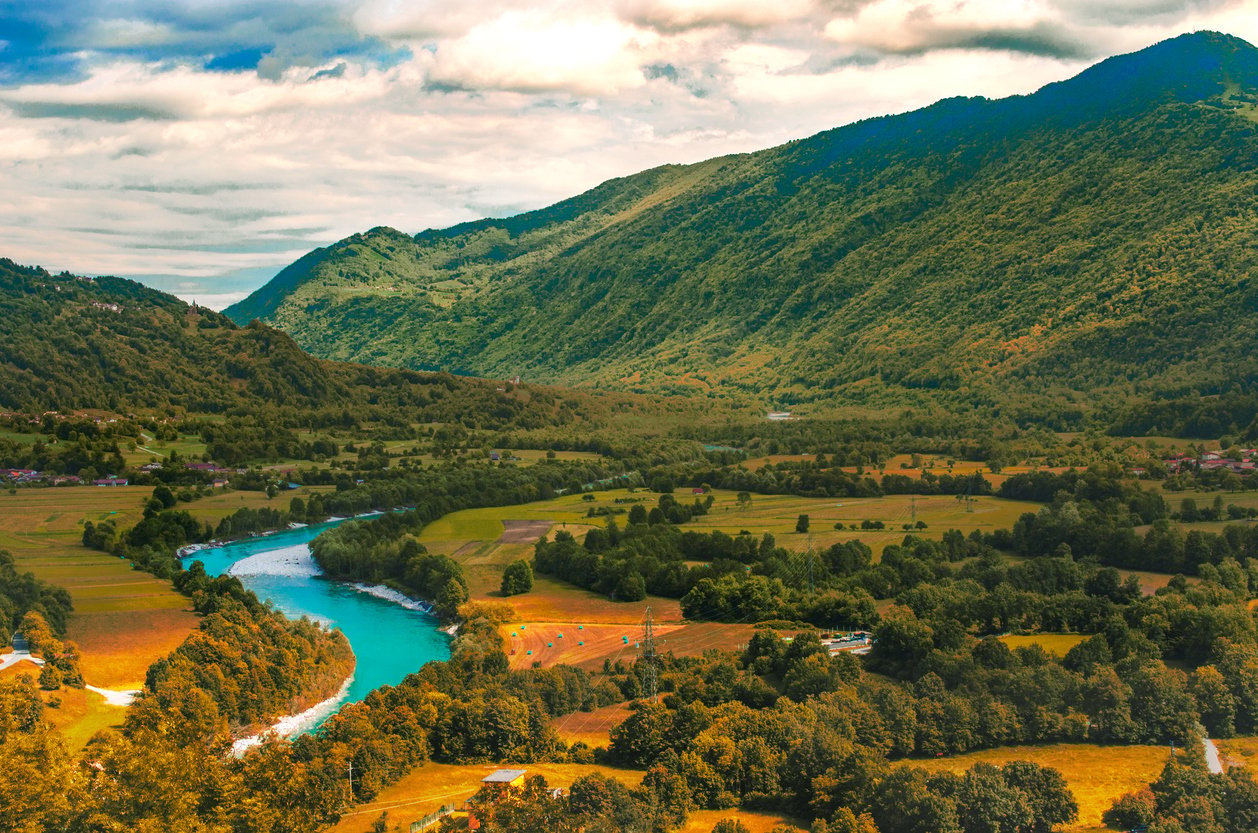
Distance: 25km
Days required: 1 day (7-8 hours of hiking)
Heard of Soča before? It’s not one of the more famous parts of Slovenia, but it’s certainly one of the most picturesque. This means it has some of the most beautiful hiking routes in Slovenia. If you have heard of Soča before, it’s probably because of the Soča river. The water is famously turquoise coloured. It’s a real beautiful spectacle.
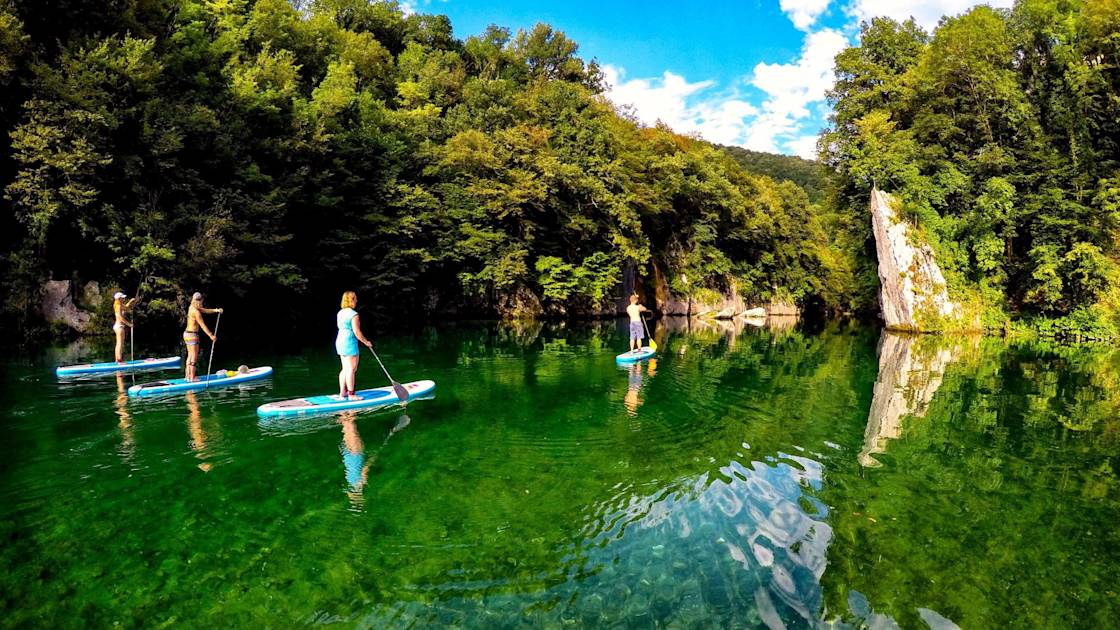
You’ll have noticed that, barring the climb of Mount Triglav, this list has mostly been multi-day hiking trails in Slovenia. So for our Soča option we thought we’d suggest a trail that you can complete in seven to eight hours of a single day. This is one for those looking to see the best of the country with limited time.
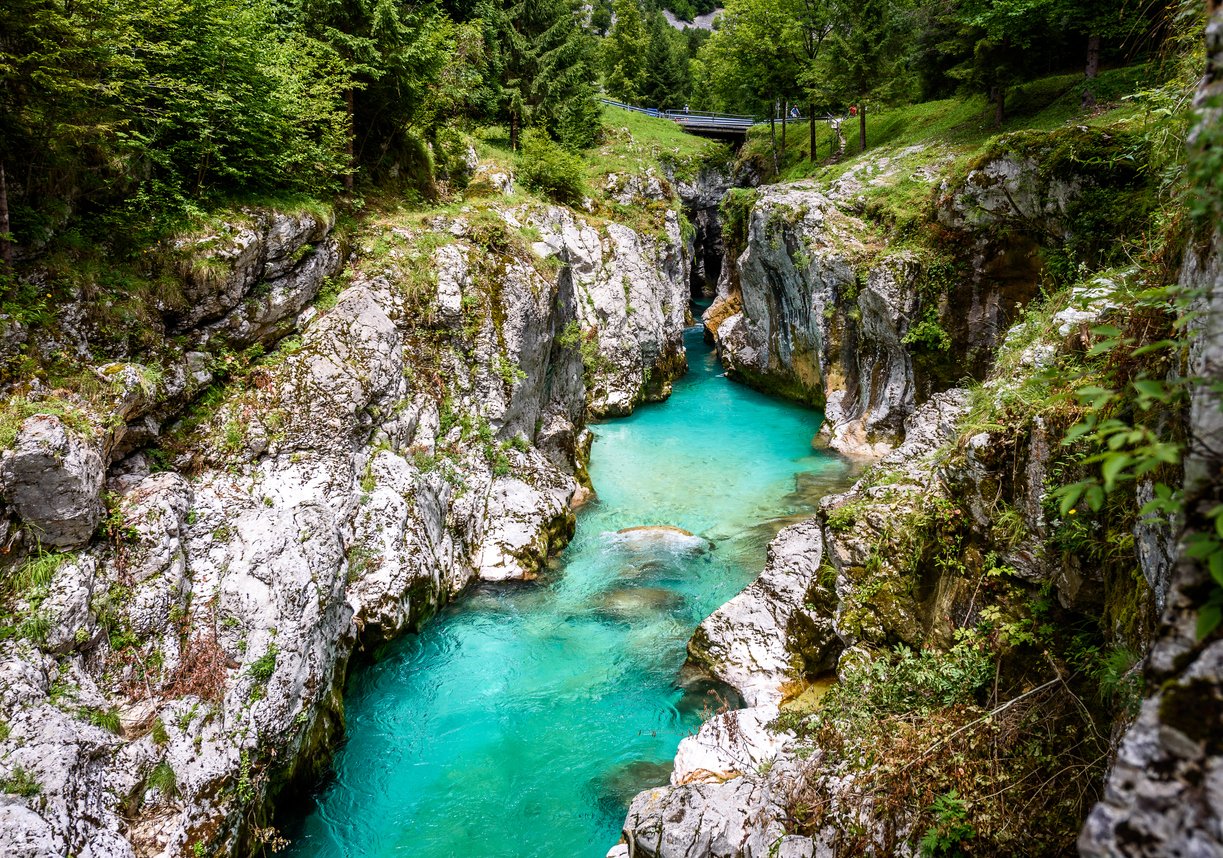
The Soča trail runs through the heart of the Triglav National Park. It was actually the first nature trail ever created in the Triglav National Park. As such, it pretty much encorporates all the greatest hits of the area. The route takes you through a whole host of notable points on the way, too. From the source of the Soča River to the Mlinarica Gorge (and several other gorges along the way).
There’s a beautiful hanging bridge over the river at Brijeka in Bovec, the Great Soča gorge is equally as epic as it sounds and the view from the Dr. Julius Kugy monument in Trenta is a surefire winner for your Instagram.
This route is actually part of another one of the great hiking trails in Slovenia which is not on our list – the Alpe Adria Trail. The Alpe Adria Trail connects the regions of Carinthia and Friuli-Venezia Giulia. It’s 750km and 43 stages long, running through Austria, Italy and Slovenia. If you’re looking for a real serious adventure, check out the full route. The Soča trail is perhaps the most beautiful segment of the Alpe Adria, though.
5. The Koroška Mountain Trail
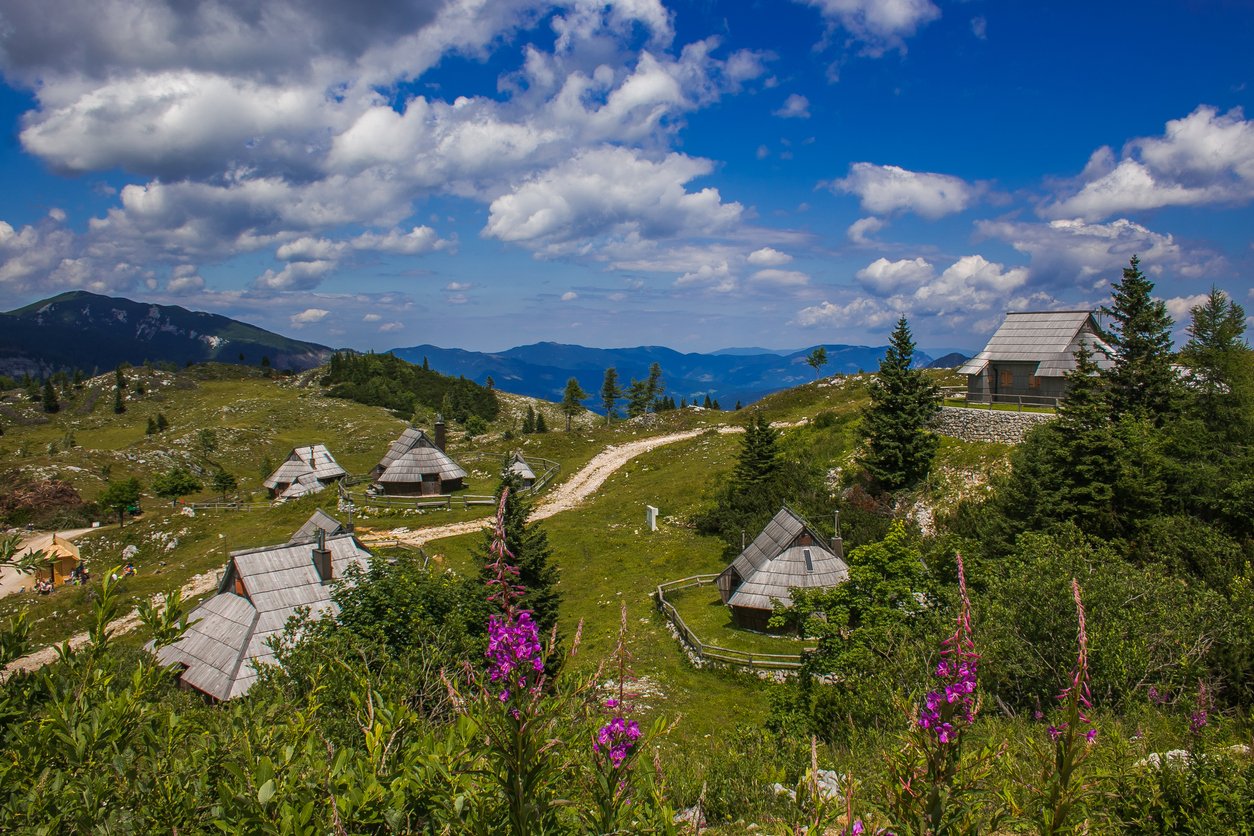
Distance: 230km
Days required: 11-12 days
You probably haven’t heard of Koroška before. Koroška is a Slovenian word meaning ‘Carinthia’. You might have heard of Carinthia before. If not, it’s a region in northern Slovenia.
The Koroška mountain trail is a long-distance circular trek that will take you along stunning hillsides and through through valleys in the region – the Meža, Drava and Mislinja river valleys.
The route passes through a whole load of mountain ranges, too. It connects the Karavanke mountains, one of the longest ranges in Europe, with the lower Pohorje hills (where you’ll find the beautiful Maribor). It also visits the area of Kozjak, known for the Kozjak waterfall (pictured below), and the Savinja Alps. The latter lie in northern Slovenia and stray into Austria. So safe to say, there’s no lack of natural wonders to gawk at along the way.
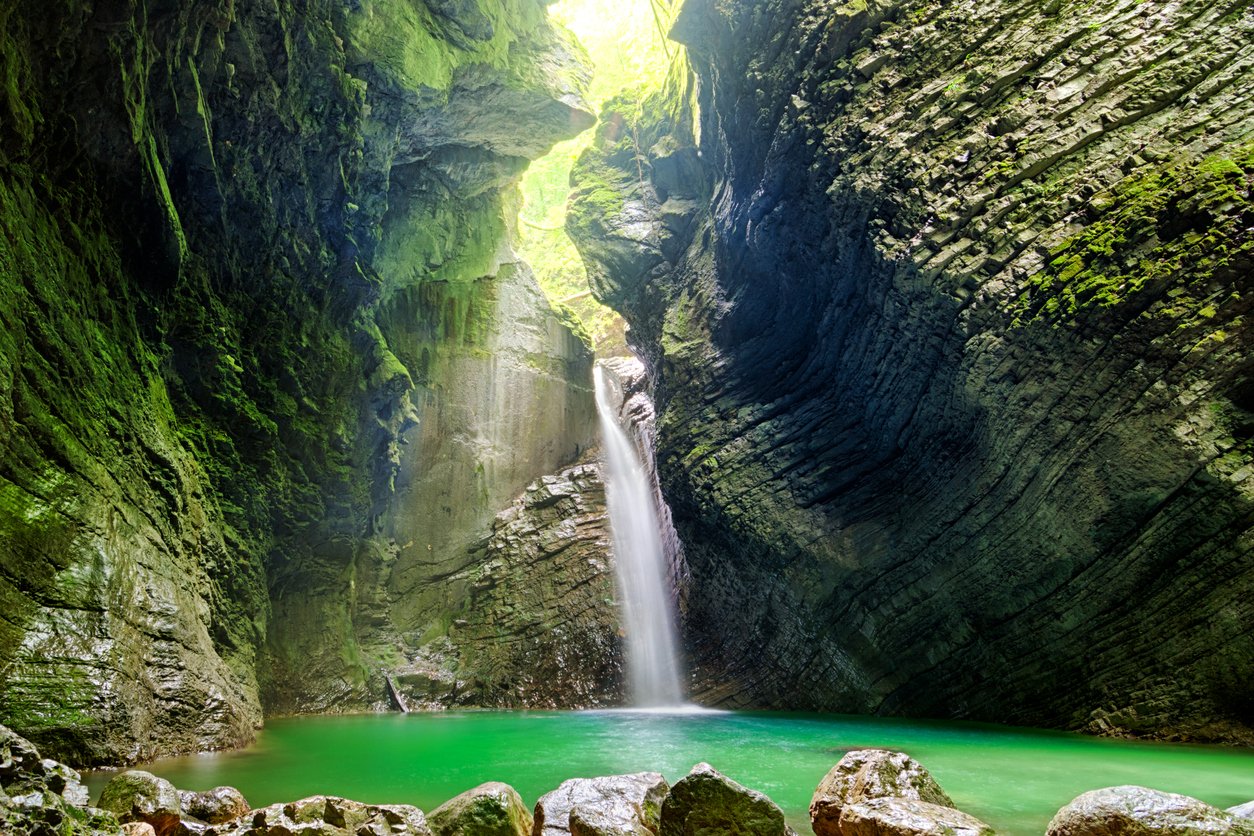
There are 31 control points on the route and a whole hoard of mountain huts. You have to earn those views though. With all that climbing and descending, this is no walk in the park. In fact, it’s a hike in the mountains. Literally. A 10-day tour of the area is possible but it’d require a good pace and strong fitness.
If you’re a mountain biking fan, you may want to extend your stay. There’s plenty opportunities to ride around Koroška – from the Jamnica Single Trail Bike Park to the 12km Flow Trail Peca. It’s one of the longest flow trails in Europe! Jamnica has recently hosted a stage of the Enduro World Tour, so it’ll no doubt soon be transforming from an undiscovered mountain biking gem to a certified MTB mecca. Beat the crowds!
6. Debela Peč Hike
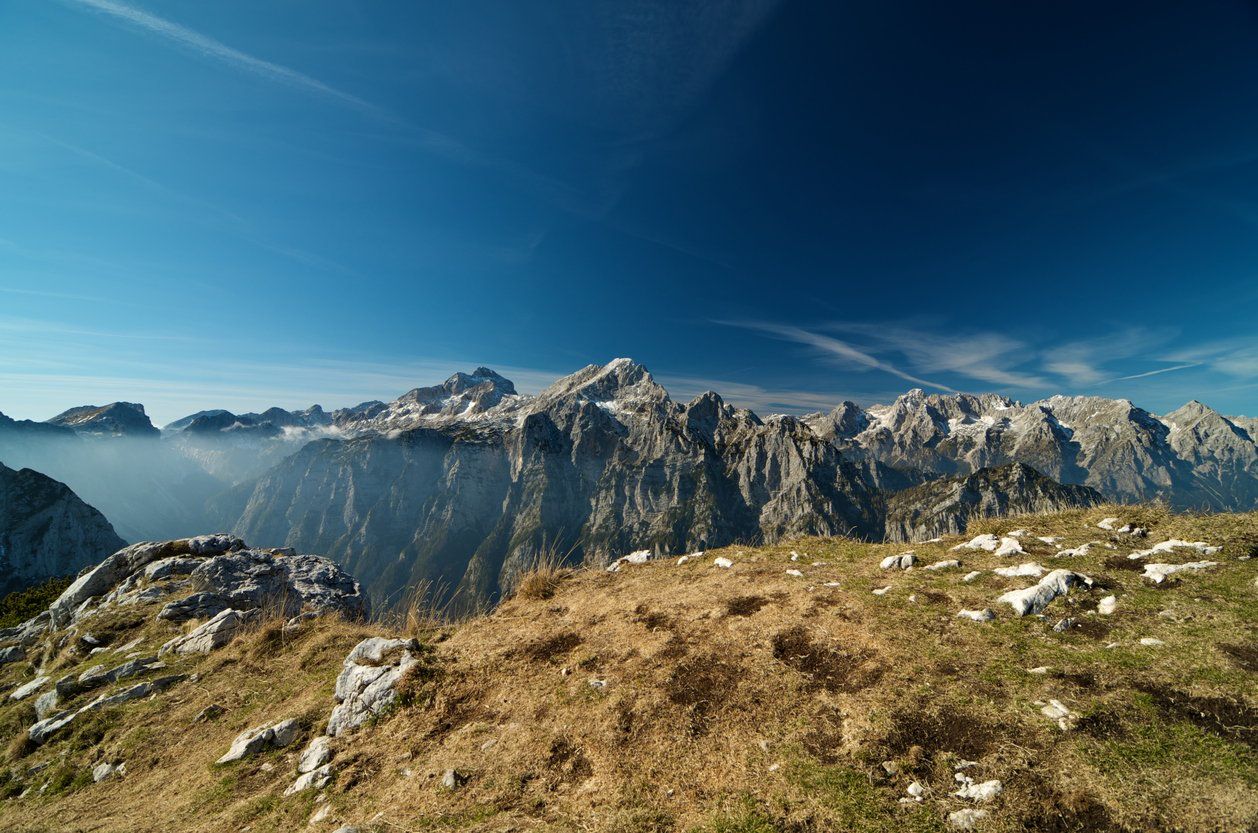
Distance: 18.5km
Days required: 1 day (approx 5-6 hours)
Bled is probably the best known and most common spot for visitors heading to Slovenia. With good reason too. Lake Bled, with the picturesque ‘Pilgrimage Church of the Assumption of Maria’ in the centre, is one of the most beautiful in Europe or beyond.
But if you’re coming to Bled for the views and don’t have the time to climb Triglav, what are you going to do? There are actually a whole host of hiking trails in Slovenia that are incredibly accessible from Bled. One of the best, most picturesque options is to hike to Debela Peč. It’s possibly the most panoramic peak in the Julian Alps.
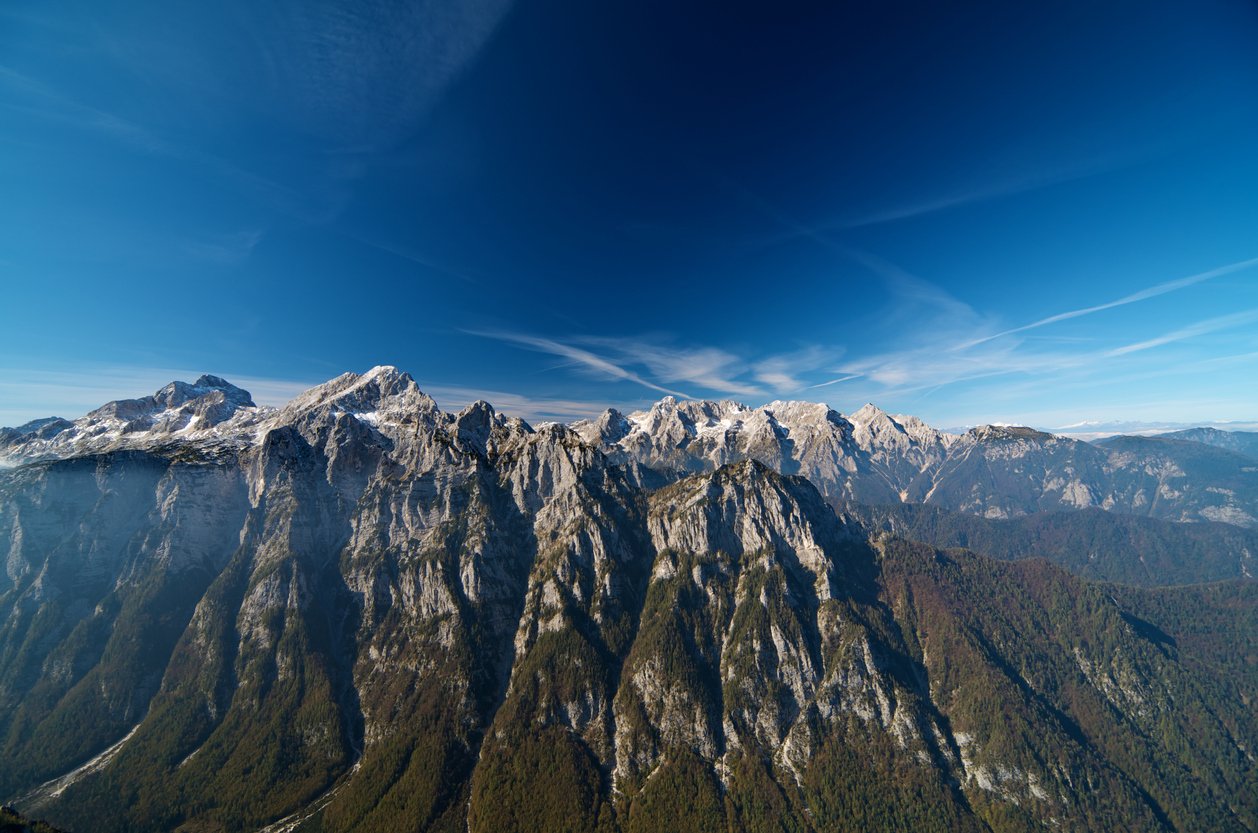
Starting from the Šport Hotel on the Pokljuka Plateau near Bled, this is a 750m climb that’ll take about six hours. Along the way you’ll travel through forests and hills till you reach a mountain hut on an alp that will then set off for Debela Peč itself.
This is the peak of the highest summit on the ridge line. Looking back the way you came, you’ll be able to see beautiful views to the south as well as get stunning lookouts over the Krma Valley.
If this hike sounds good but not quite long enough, you can extend it. You can hike on to the neighbouring Brda (or there are other options). We love Brda. If you were shown a picture of the region, you would probably guess that it was Tuscany. Providing Slovenia’s border with Italy, the area is a wine and gastronomical haven – so there’s plenty of rewards waiting if you do make the trip.
Feeling inspired? Check our trekking and hiking trips and adventure holidays in Slovenia.

